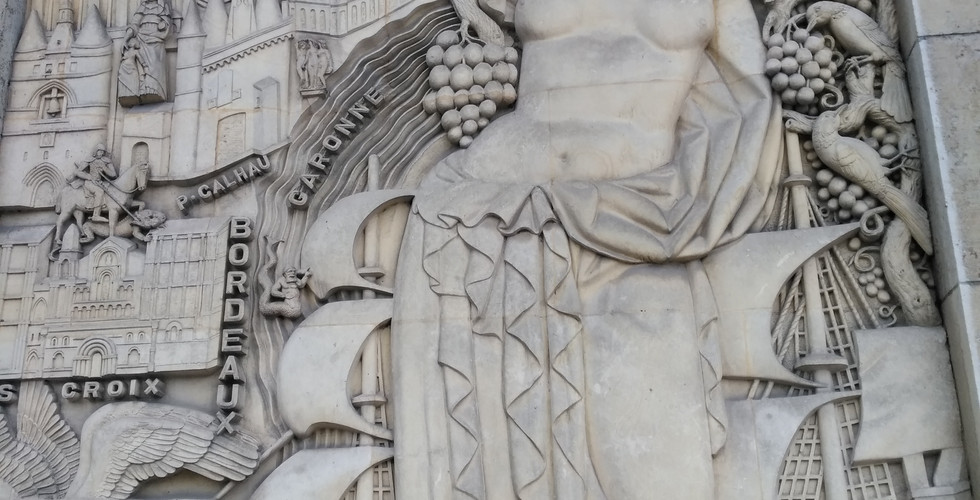ART DECO IN PARIS
- Ann Fitzgerald

- Jan 1, 2018
- 2 min read
Updated: Oct 30, 2020
The Art Deco design movement originated in Europe in the early teens of the twentieth century and had its heyday from 1925 to 1939. It takes its name from the “Exposition Internationale des Arts Décoratifs et Industriels Modernes” held in Paris in 1925 where it was first showcased. However, the term "Art Déco" only became popular retrospectively in the 1960’s when it was coined by Art Historians seeking to define the design movement that accompanied the Jazz Age and the Skyscraper era in the inter-war period. Prior to that in France, the style was known simply as “Rétro” or “Style Moderne” or “Style Poiret” referring to the fashion designer Paul Poiret.
Art Déco represented modernity in the machine age with an emphasis on looking towards the future rather than harkening back to the past. It is characterized by symmetrical, geometrical and streamlined designs with bold curves and stylized sunbursts motifs. It borrowed from several different movements of the early 20th Century, notably; geometric forms from cubism, the machine style from the Russian Constructivism and Futurism movements but it also displayed more exotic influences from Mayan, Aztec and Egyptian cultures such as stepped pyramids, towers, chevrons and zigzags as well as sculptural relief from Ancient Greek & Roman civilizations.
It is what is known as a “total art” encompassing not only architecture, painting and sculpture, but also the graphic and decorative arts such as interior design, furniture, jewellery, textiles, fashion and industrial design. Although initially reserved for a wealthy clientele, Art Déco became increasingly democratized particularly in the United States making aesthetically pleasing machine-made objects and available to all.
In Art Déco architecture, buildings have a sleek, angular appearance with a vertical emphasis and are usually constructed in concrete, brick or tiles. Bas Relief decorative panels or sculptures can be found around the entrance or above windows or under the roof. They often feature bow windows and stylized wrought iron balconies. Interiors were decorated using precious woods (oak, mahogany), ceramics, textiles, gold & silver, stained glass, lacquer and inlaid wood.
Some of the more famous names associated with Art Déco in France are: Architecture: Auguste, Perret, Jacques Carlu, Pierre Chareau, Henri Sauvage, Le Corbusier & Mallet-Stevens - Furniture: Emile-Jacques Ruhlmann, Maurice Dufrêne, Paul Follot, André Groult - Fashion Designer: Paul Poiret – Fashion Illustrator: Erté - Glass & Ceramics: Réné Jules Lalique - Ironwork: Edgar Brandt - Raymond Subes - Sculpture: Antoine Bourdelle - Painter: Tamara de Lempicka - Graphic Design: A.M. Cassandre
Art Déco declined in Europe in the 1940’s with the onset of WWII to be replaced by Modernism or International Style.
Click through the gallery below to see a selection of some of the more well-known Art Déco buildings in Paris.





























































































Comments